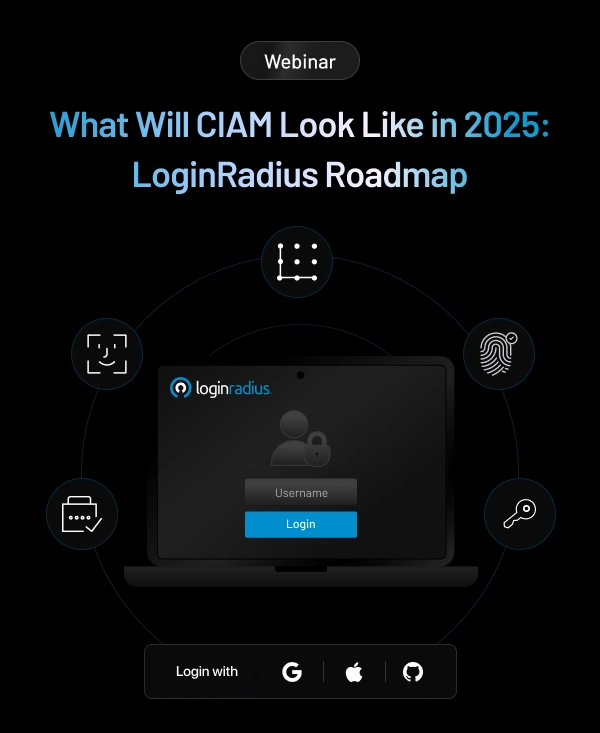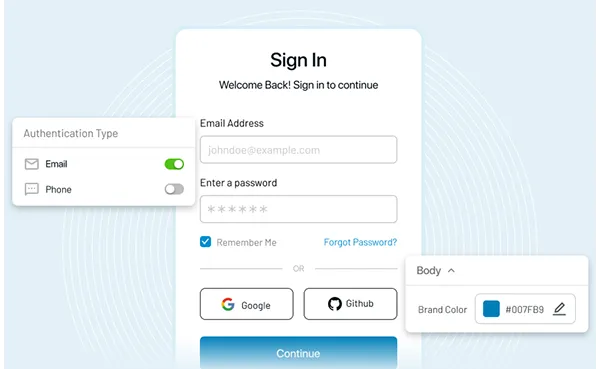For an end-user, convenience is everything. For this reason, the development process that most developers follow focuses primarily on making the application as easy to use and convenient as possible. This focus would then result in the creation of a new login option, Social Logins.
What is Social Login Authentication?
In a nutshell, social login contributes to a more efficient form of user management. The concept of social login authentication or social authentication involves creating a single sign-on for applications. This means that users can sign up for a range of applications or websites without having to repeatedly input their credentials.
The login credentials usually come from a social media platform like Twitter, Facebook, and more, which the user can use to automatically input the credentials they require. Thus, the process of user social login authentication will be cut short significantly for users.
How Does Social Login Work?
Social logins is usually manifested using the following steps:
- Social login is typically visible to a user when they click on an application and are gearing up to register to it as a new user or log in as a repeat user. To sign in with social media, the application will then place a series of CIAM (customer identity and access management) authentication options in front of the user. These options are essentially suggesting that the users can provide the required login credentials using the following social networking link.
- Upon choosing a link, the respective social media platform will notice a sign-in or log-in request.
- The user will then receive a notification asking to grant access to the app or the website.
- Finally, the social media provider will confirm the identity of the user, who will then obtain access to the application or site.
Depending on the social network provider and their respective CIAM management practices, the process of social login authentication differs slightly. This is because each platform collects different user information and implements distinct consumer data security strategies.
Therefore, the social logins of popular social media platforms involve the following distinctions:
- A user who chooses to log in to a website or application using the Facebook login will allow the said site to access all the information present on their Facebook account. However, the user does have control over what information is accessible to the third-party site that they are logging into by agreeing to a series of permissions.
- A Google sign-in would allow third-party websites to access customer information like age range, friend lists, and the ability to interact with the customer's public feed. The third-party website or application will also be able to send emails to the customer.
- When it comes to LinkedIn, the user will not be able to control permissions as in the above two cases. The user's professional information will be accessible to the website upon receiving approval from LinkedIn to collect user information.
- The Apple Sign-in is a different story altogether as users will be granting access to their Apple IDs. To increase the authentication security social login, users will have to carry out two-factor authentication with each login.
Therefore, depending on what information a developer would like to access, they will have to choose a social network provider accordingly.
Why Should You Add Social Login to Your Applications?
- Competitive Advantage: Social login should be the default for startups today, offering a significant competitive edge. Users can access your site without the need for a lengthy registration process.
- Convenience for Users: Prioritize user convenience by allowing them to log in with their existing social media accounts. This eliminates the need for users to remember multiple passwords or create new accounts.
- Efficient User Management: Social login streamlines user management, creating a single sign-on solution. Users can sign up for various applications without repeatedly inputting their credentials.
- Cost-Effective Implementation: Implementing social login is cost-effective for developers, as many social media platforms offer free APIs for integration.
- Enhanced Engagement: With user permission, developers can tailor experiences based on users' social media profiles, leading to increased user engagement.
Also Read: Implementing Social Authentication Solution with LoginRadius
The Advantages of Social Logins as an Authentication Solution
To determine if implementing social authentication is worth it, it will help to outline what benefits it offers. This CIAM authentication solution has a range of benefits for both users and developers alike. For developers, social login provides the following advantages:
- Improve User Management
Using a CIAM authentication option like social login, developers can ensure that a user is a real person. This essentially acts like an additional layer of verification aiding in identity management. It will also help to protect against spam and other harmful login options.
- Cost-effective Customer Data Security
Developers need not spend time or money on introducing social authentication on their platforms. This is because of the availability of APIs present on the social media platforms like Facebook Login and the Google+ API. In most cases, these APIs are free to use.
- Increase Engagement
In case the user agrees to permit the third-party website or application to access their information present on social media platforms, a developer can create an experience that aligns with the user's preferences. Therefore, the application is more likely to engage the user.
When it comes to users, the use of social logins will bring about the following benefits:
- Management of Few Accounts
Users will not have to deal with several accounts at a time. This aspect will be especially useful as one would not have to remember different passwords. Therefore, the chances of a user being unable to log in decrease greatly.
- Convenient Sign-in
The sign-in process is especially easy as users need not fill long forms to register themselves to the website. The predictability of the registering process will also mean that users are more likely to sign up. Therefore, users can have an infinitely better experience with the third-party website.
- Consumer Trust
Users that are wary of what information is accessible to third parties can use social login to control this accessibility. Therefore, one has more control over their information while signing in quickly.
Problems With Social Login
Among the many benefits that social logins offer users and developers, certain issues crop up. This includes problems like data breaches of social media platforms, improper password practices, and lack of privacy and compliance. However, the responsibility of mitigating these risks falls on developers of third-party websites and social media platforms.
Despite the few reservations that users may have regarding the safety of social logins, this authentication solution is comparatively safe. To ensure that social logins have an extra layer of social security authentication, users can also back it up with multi-factor authentication. This added layer will mean that bad actors are less likely to breach users' social media accounts and the websites they link to.
Reap the Benefits of Social Login with LoginRadius!
- Streamlined User Management: Social login acts as an extra layer of verification, aiding in identity management and reducing spam.
- Cost-Efficient Security: Leverage free APIs from platforms like Facebook Login and Google+, saving time and resources.
- Increased Engagement: Personalize user experiences based on social media profiles, leading to higher engagement.
- Simplified Account Management: Users can easily manage multiple accounts without remembering numerous passwords.
- Seamless Sign-In Process: Registration becomes a breeze, with users skipping lengthy forms for a smoother experience.
- User Trust and Control: Empower users with control over their data, enhancing trust and privacy.
Conclusion
Implementing social login authentication offers numerous benefits for both developers and users. It streamlines the user experience, improves security, and enhances engagement. Despite potential concerns, such as data breaches, the benefits of social login, especially when coupled with multi-factor authentication, outweigh the risks. Consider integrating social login into your applications today to stay competitive and provide a seamless experience for your users.
FAQs
1: Why implement social login?
Social login helps streamline registration and authentication mechanisms for enhanced user experience since users can use existing social media accounts to sign up or sign in.
2. What is the meaning of social authentication?
Social authentication allows users to use their social media accounts to authenticate themselves without creating a new account.
3. How do you implement social media login?
Organizations can implement social login by using a robust CIAM solution like LoginRadius.
4. What is the difference between SSO and social login?
Single Sign-On (SSO) allows users to access multiple applications with one set of credentials. At the same time, social login is an authentication mechanism that specifically uses social media credentials for user authentication.

















